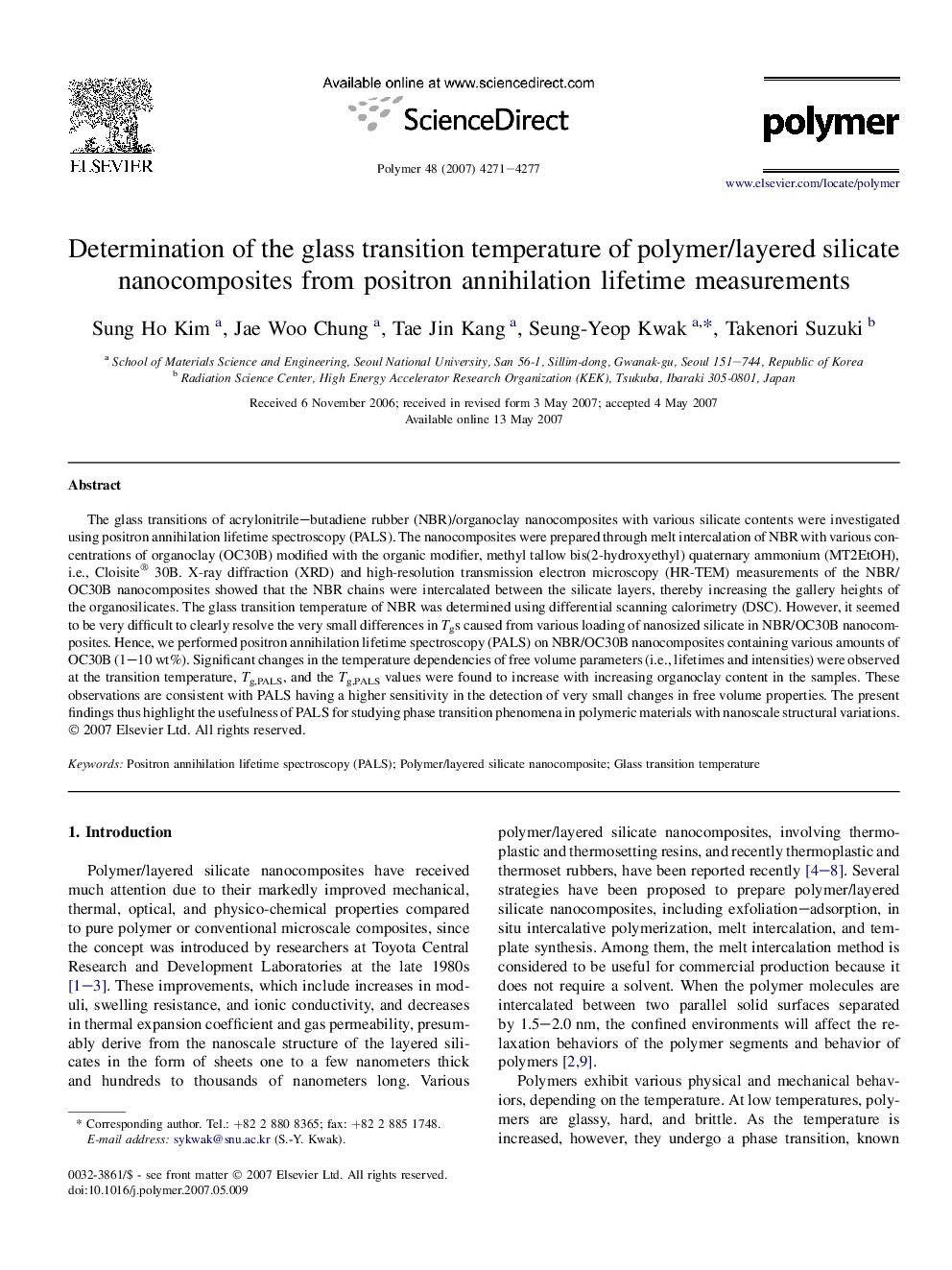| Article ID | Journal | Published Year | Pages | File Type |
|---|---|---|---|---|
| 5189963 | Polymer | 2007 | 7 Pages |
Abstract
The glass transitions of acrylonitrile-butadiene rubber (NBR)/organoclay nanocomposites with various silicate contents were investigated using positron annihilation lifetime spectroscopy (PALS). The nanocomposites were prepared through melt intercalation of NBR with various concentrations of organoclay (OC30B) modified with the organic modifier, methyl tallow bis(2-hydroxyethyl) quaternary ammonium (MT2EtOH), i.e., Cloisite® 30B. X-ray diffraction (XRD) and high-resolution transmission electron microscopy (HR-TEM) measurements of the NBR/OC30B nanocomposites showed that the NBR chains were intercalated between the silicate layers, thereby increasing the gallery heights of the organosilicates. The glass transition temperature of NBR was determined using differential scanning calorimetry (DSC). However, it seemed to be very difficult to clearly resolve the very small differences in Tgs caused from various loading of nanosized silicate in NBR/OC30B nanocomposites. Hence, we performed positron annihilation lifetime spectroscopy (PALS) on NBR/OC30B nanocomposites containing various amounts of OC30B (1-10Â wt%). Significant changes in the temperature dependencies of free volume parameters (i.e., lifetimes and intensities) were observed at the transition temperature, Tg,PALS, and the Tg,PALS values were found to increase with increasing organoclay content in the samples. These observations are consistent with PALS having a higher sensitivity in the detection of very small changes in free volume properties. The present findings thus highlight the usefulness of PALS for studying phase transition phenomena in polymeric materials with nanoscale structural variations.
Related Topics
Physical Sciences and Engineering
Chemistry
Organic Chemistry
Authors
Sung Ho Kim, Jae Woo Chung, Tae Jin Kang, Seung-Yeop Kwak, Takenori Suzuki,
